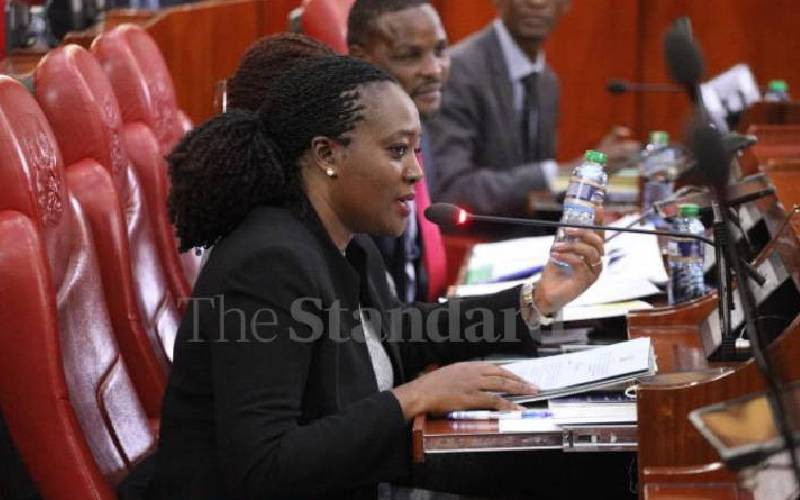Mr Adekunle Sonola, the CEO of GTBank, hosted Kenya Bankers Association’s My Chat with a Bank CEO discussion last week on the risk aspects that affect the cost of credit. Excerpts:
Anita: Kindly elaborate on some of the key factors that affect the cost of credit.
Sonola: To start with, the macroeconomic indices in any economic environment will determine the pace of economic activity in that environment. If an economy is in recession or growth mode, it will have an impact on the cost of credit.
In America, for example, the cost of credit has gone down significantly because the economy was in recession, therefore the Government had to intervene and empower the market to reduce the cost of credit. If you take the case of Ghana, interest rates are still in the high 20s. Closer home, we can start with the fact that we have over 40 commercial banks, each with different cost structures, credit ratings and risk appetites. Ultimately, all these factors, as well as the risk profile of a company or individual customer, affect the cost of borrowing.
Alex: What are some of the factors banks consider to offer credit to individuals?
Sonola: In most markets, the banks consider each individual’s personal circumstances, which would include employment status, average living standards in that market, the expense profile of the borrower, other credit facilities he/she has access to and the performance of these credit facilities, and ultimately his/her repayment capacity.
Elizabeth: The cost of credit in Kenya has been a thorny issue as banks are said to charge very high rates. When you look at the risk factors in this economy, would you say the costs are justified?
Sonola: The cost of credit is not the issue. Let me explain. If you look at the American situation, in trying to get the country out of recession, the Government (Federal Reserve, which is their central bank) rate is close to zero per cent and the average market (bank) lending rate could be up to 6 per cent, based on individual circumstances, but the country has been slow to come out of recession.
The bank is a business like any other that participates in the economy, and would bear some of the challenges that are unique to every economic environment, such as infrastructure, cost of communication, cost of human capital (labour) and level of taxes. Ultimately, for every bank, given the level of competition in the industry, careful evaluation of the cost of lending is undertaken and includes some of the factors that I’ve mentioned.
Allan: I would like to know if I can access credit based on my banking, not collateral.
Sonola: Most banks in Kenya offer an unsecured loan product, which is based on your account history, and the loan repayment performance of existing facilities, which is your track record.
Lucy: How do banks compare to microfinance institutions? And don’t you think banks are losing out to MFIs by asking for too many things and subjecting customers to long delays only to end up denying them credit?
Sonola: Microfinance institutions’ lending rates are higher than banks, and with the exception of the deposit-taking MFIs, most are not regulated by the central bank. This has an impact on their operations and ability to serve the market quickly.
Banks are regulated and are required to comply with CBK prudential regulations and a plethora of other international regulations, so you will find that most of the things we ask for from the customer are actually dictated by regulations, laws and prudent risk management practices.
The fact that MFIs ask you for little/minimal information is compensated by the higher interest rate they would charge; it is a risk/reward principle.
Stay informed. Subscribe to our newsletter
Conrad: If the element of risk dramatically increases, say due to political instability or terrorism, would the cost of credit be affected for customers already servicing a loan?
Sonola: The issue is the effect that political instability or terrorism will have on economic activity. If it leads to retrenchment or layoffs, a person’s ability to service the facility will be affected.
Every credit default by a customer has the following effects: it increases the cost of credit to the system; it makes banks more cautious in their approach to lending — the caution manifests in even more detailed evaluations of credit applications and assessments of the impact of future shocks on businesses and individuals. Therefore, there is a real cost associated with such risks.
 The Standard Group Plc is a
multi-media organization with investments in media platforms spanning newspaper
print operations, television, radio broadcasting, digital and online services. The
Standard Group is recognized as a leading multi-media house in Kenya with a key
influence in matters of national and international interest.
The Standard Group Plc is a
multi-media organization with investments in media platforms spanning newspaper
print operations, television, radio broadcasting, digital and online services. The
Standard Group is recognized as a leading multi-media house in Kenya with a key
influence in matters of national and international interest.
 The Standard Group Plc is a
multi-media organization with investments in media platforms spanning newspaper
print operations, television, radio broadcasting, digital and online services. The
Standard Group is recognized as a leading multi-media house in Kenya with a key
influence in matters of national and international interest.
The Standard Group Plc is a
multi-media organization with investments in media platforms spanning newspaper
print operations, television, radio broadcasting, digital and online services. The
Standard Group is recognized as a leading multi-media house in Kenya with a key
influence in matters of national and international interest.







